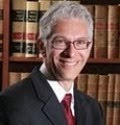A couple weeks ago I attended the Portland installment of Cheech and Chong’s Get it Legal tour that fuses comedy with activism on the drug war front, specifically marijuana laws. The audience spanned several generations that unequivocally appeared to support legalization. In an interview prior to the tour, Mexican American Richard “Cheech” Marin (winner of the first Celebrity Jeopardy show and recipient of a degree in English from Cal State Northridge) remarked on what he called the “quasi-legal” state of marijuana use in the United States: “[Legalization is] getting closer all the time. You can walk down the street of just about any city smoking a joint, and nobody’s gonna hassle you. It’s ridiculous that it’s not legal.”
Although in their movies these hapless stoners have variously used and dealt a variety of drugs including LSD, cocaine, peyote, and amphetamines, the comedy duo is best associated with marijuana humor. Their tour wisely focuses on this drug as having the most traction for legalization. Marijuana use has entered the mainstream of pop culture with its comedic use in television shows such as Weeds and films such as Pineapple Express (2008), Harold & Kumar Go to White Castle (2004) and Something About Mary (1998).
But despite these appearances, marijuana enforcement is no dead letter, particularly in neighborhoods of color. Despite studies confirming young Anglos use marijuana at the same or higher rate than Blacks and Latino/as, youths of color are disproportionately arrested for drug possession. In 2008, for example, although constituting only about half of its urban population, Blacks and Latino/as comprised 87 percent of the 40,000 arrests in New York City for marijuana possession.
Enforcement also continues on the interdiction side when Mexican drug dealers are targeted. Even Tommy Chong fell victim to the post-September 11th conflation of the drug war with the war against terrorism. He served nine months in federal prison for his role in financing and promoting a family business selling bongs (Chong’s Bongs) and water pipes, and he also forfeited over $100,000.
Awash in drug violence, Mexico finally broke from U.S. influence and decriminalized user quantities of all drugs in 2009, eliminating jail terms for those possessing small amounts of marijuana (the equivalent of no more than four joints), cocaine (four lines), heroin (50 milligrams), methamphetamine (40 milligrams), and even LSD (0.015 milligrams). In a forthcoming book, Run for the Border: Lessons from 150 Years of U.S-Mexico Border Crossings, I argue for a more nuanced policy of drug legalization. In contrast to Mexico’s recent decriminalization across the drug spectrum, I argue for U.S. policies closer to those espoused by Cheech and Chong on their current tour.
Mexico’s recent action will do little, if anything, to suppress cross-border drug trafficking and the violence it creates. There is no chance that addicts or casual users in the United States will run for the border into Mexico en masse every time they want to partake in illegal substances. Therefore, the Mexican drug cartels will remain in business supplying the insatiable U.S. demand should the United States not take the drastic but logical action itself of decriminalization.
A more reasonable middle ground for U.S. policy is to start by decriminalizing and taxing marijuana production, distribution, and possession. The United States could then gauge the impact on the viability of the Mexican cartels as well as the impact on marijuana use and user health in the United States. According to estimates, marijuana constitutes some 70 percent of the product distributed by Mexican drug cartels, meaning decriminalization should have a cataclysmic effect on the Mexican drug trade and associated violence. With the illicit marijuana trade scuttled, cooperative cross-border enforcement imperatives could more easily tackle remaining drugs such as heroin, whose base ingredient of opium can only be cultivated in specific regions of Mexico and once harvested is devoted almost entirely to producing heroin intended for U.S. users. Methamphetamine, a horrible chemical scourge that destroys health and family life, could be pursued with greater vigor as well, once the distraction of marijuana laws is removed.
As with immigration policy, U.S. drug law should be considered a fluid work in progress that undergoes constant scrutiny to mitigate external harm while taking advantage of the best science and addiction treatment and abuse prevention techniques that come along. A public health focus means that government can concentrate on funding studies and technology to curb addiction rather than striving to entrap smugglers in the longstanding but failed policy of interdiction.
Maybe an alternate middle ground to broad-scale legalization is what Tommy Chong (now 71 years old and a casualty of John Ashcroft’s Operation Pipe Dreams) quipped on a Fox News interview while promoting the 2010 tour: the United States should legalize pot except for Republicans.





















